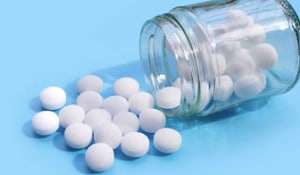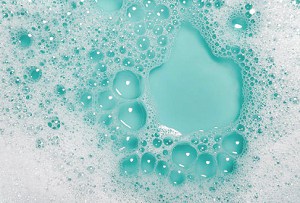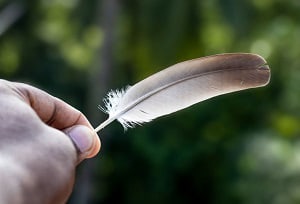Gathering feathers for crafts is a fun hobby, but it can be worrisome. Birds carry parasites, bugs, microbes, and dirt that stick to their pretty feathers. So, proper feather cleaning is a must.
For anyone who is fond of picking up feathers, be sure to clean feathers found outside. We are here today to show you how to clean bird feathers. Rest assured, it is a simple process that you can easily follow with all the needed tools already in your home. Let’s get started!
Table of Contents
Step-by-step to Clean Bird Feathers
Feathers make a good ornament or jewelry. So, kids sneakily pick them up from the ground all the time. But they can get sick doing this. That is why we emphasize the importance of clean decorative feathers.
Here is a guide you can follow to make sure the feathers you have gathered are clean and safe for crafting. We included several alternatives for each step to ensure that you get an effortless process.
What to prepare
- Toothbrush
- Ziplock bag
- Airtight container and mothballs
- Rubbing alcohol and hydrogen peroxide
- Dish/hand soap
- Hair dryer
- Electric kettle or garment steamer
- Citronella or cedar oil
Step 1: Eliminate mites and parasites
Parasites like lice and mites thrive in bird feathers. You should remove them before taking any of the feathers you have picked up outside. A few of these parasites are enough to infest your homes. There are three ways to do this:
- Toothbrush
Use a toothbrush with soft bristles and brush off insects and dust from the feathers. This method is time-consuming; thus, it is better if you only have a few feathers.
- Mothballs
Place several mothballs containing paradichlorobenzene in an airtight container with the feathers. Store them outside for 24 hours in a dry place without sunlight.
- Freezing
Place your feathers in a ziplock bag and put it in the freezer. Set the temperature to at least -18°C; the colder the better. Leave the feathers in the freezer for 48 hours, take them out for a day, then freeze them again for two days.
Step 2: Sanitize the feathers
After getting rid of the mites and parasites, the next step is to eliminate the bacteria. We have three ways to sterilize feathers.
- Rubbing alcohol and hydrogen peroxide
Mix a 1:1 ratio of isopropyl alcohol and hydrogen peroxide. Soak the feathers in the mixture for 30 minutes. Don’t add water, it lessens the effectiveness of the formula. Bleach is a no-no, it makes the feathers brittle.
- Soap
Dilute dishwashing in water into a container. Softly swish the feathers in the water to sanitize them. Make sure to reach all the parts. If you have many feathers, do it in batches.
- Boiling water
Bring a pot of water to a boil. Put the feathers in the water and boil it for a few minutes. With a soft cloth, gently remove the loosened gunk. Then, place the feathers flat on a paper towel.
Step 3: Cleanse and dry
After sanitizing, wash feathers with hand soap diluted in water. Swish the feathers around in the mixture. Then, rinse them thrice in clean water. If you used dishwashing soap to sanitize them, skip this step and proceed to dry the feathers.
Drying the feathers quickly after washing them is very important. Otherwise, you risk mold or fungal infestations developing. The best way to do this is to soak up the water and use a hairdryer to dry it.
Step 4: Fluff to restore its looks
To restore feathers to their perfect shape, fluff them! Use the steam from an electric kettle to preen the feathers one by one using your fingers. A garment steamer is more suitable if you are working with many feathers.
Step 5: Preserve and store
There are several ways to preserve feathers from a dead bird. Make sure you follow the first four steps. Then, proceed to rub cedar or citronella oil on your palms and massage the feathers.
Covering them with boric acid is another way to keep them intact and protect the feathers from insect infestation. Next, keep the feathers in a tightly sealed container. Place it in a safe and dry place away from any sunlight.
- Note: The Migratory Bird Treaty Act (MBTA) prevents any individual from collecting feathers from raptors and migratory birds. Therefore, it is risky to pick up a feather you find. Only do this if you know which bird species it belongs to. Adhere to this law and stay on the safe side by only gathering feathers from domesticated birds.
Conclusion
Knowing how to clean bird feathers the right way is a must for every feather collector and craft artist. Learning to clean wild bird feathers will keep you safe from bacteria and viruses that feathers carry. Also, be mindful of the laws in your state about feather collecting.
All the procedures we present are straightforward. We hope it is easy for you to follow. If you have any questions or have a better way of cleaning feathers based on your experience, let us know in the comments!
Furthermore, you also can refer more to other topics of taking care birds:
- Ways to clean a bird bath with vinegar and a bird cage with the bird inside.
- Tips to keep mosquitoes out of bird bath.

George and I became friends after a birdwatching trip with our new group. And we have been enjoying every adventure together. When he told me the idea of establishing a site that shares our experiences and fun, I immediately agreed. After trials and errors, here we have Thayerbirding.

















